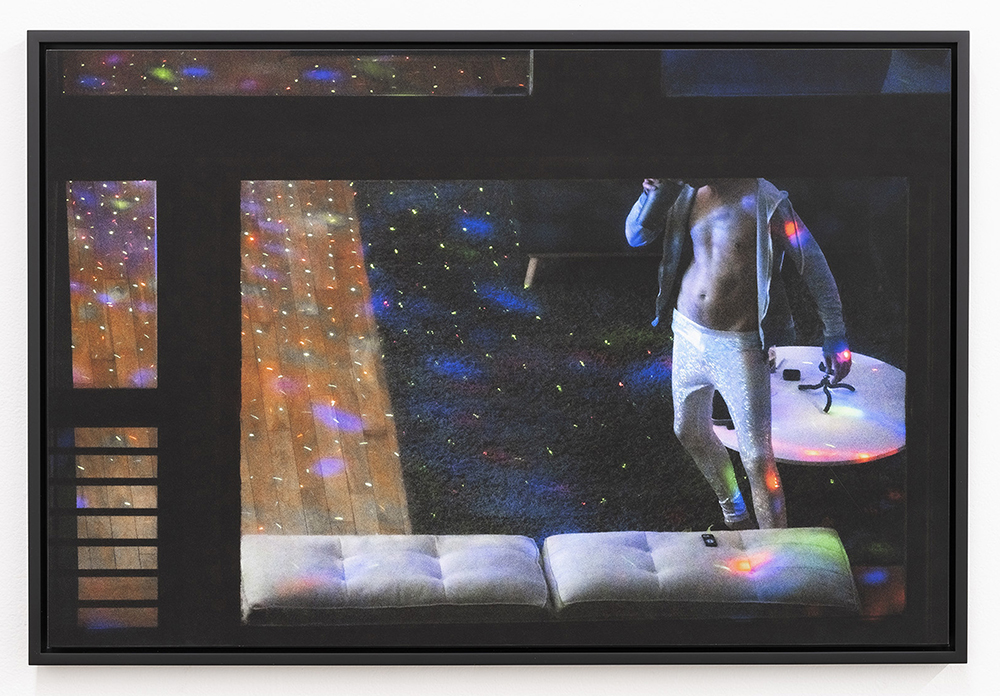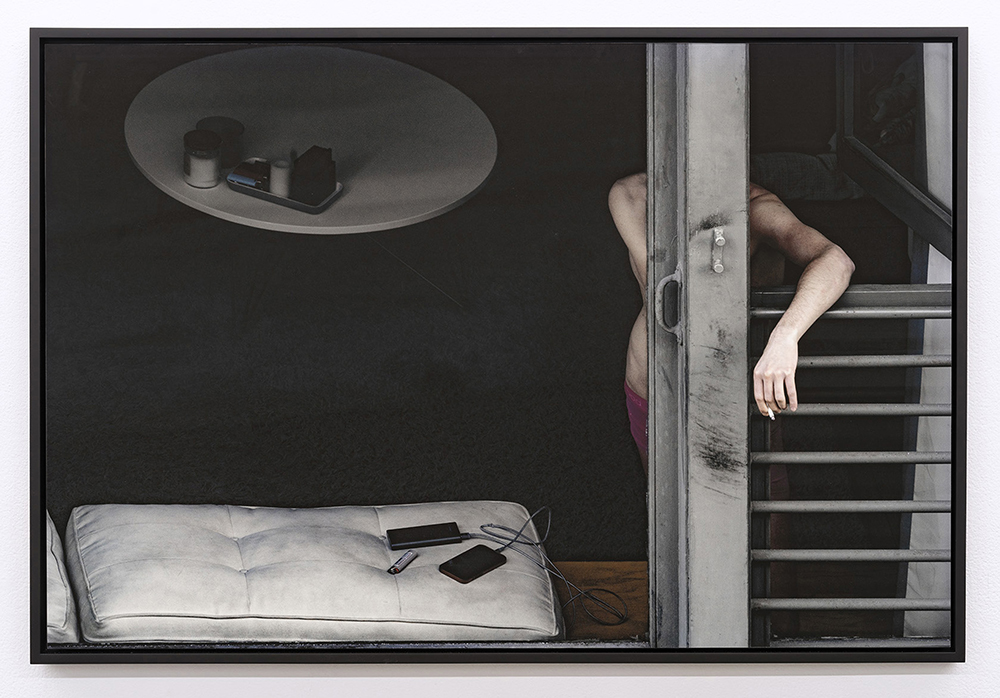In his new collection of powerful figurative images and mysterious abstract photographs, Brendan Lott proves he is both “Looking In and Looking Out.” The exhibition is curated across two rooms at Walter Maciel, allowing viewers to move between intriguing and intimate images of individuals observed through windows and the photographer’s quiet abstractions. This work continues Lott’s exploration of life in a pandemic, originally seen at the gallery last year in “Safer at Home.” Both series are poignant, haunting and poetic in composition and subject.
As the pandemic greatly altered lives, initially confining people in their homes and changing busy lifestyles to those more restrained, Lott’s camera followed. The result is an intimate look at these isolating circumstances, and the expression of human longing for connection. Balanced on the knife-edge of the voyeuristic, Lott photographed inhabitants viewed through the windows of an apartment building across from his own. The result are candid shots composed in painterly, even formal styling; narrative work that grew from Lott’s own isolation. They capture loneliness, boredom and solitude, as well as small gatherings or couplings as the world began slowly, gestationally to expand. Body language is sometimes languid, sensual; always deeply personal.

Brendan Lott, January 1, 2021, 1:57am, 2021 Courtesy Walter Maciel Gallery.
Lott’s work reveals a wide gamut of human emotion, even without seeing the faces of the individuals he depicts. A bedroom embrace blazes with the vivid red of a woman’s dress bent over a figure hidden beneath white bed sheets for a sleepy hug in “September 12, 2021, 6:14 am.” The New Year, marked with glittering holiday lights reflects on a man holding a microphone, clad in silver spandex leggings in January 1, 2021, 1:57am. The party has just begun, or possibly ended. “April 20, 2021, 4:22pm” reveals two iPhones charging in a kind of technological intimacy, while a lone woman, apparently partially nude, is concealed behind a concrete post. Her hand holds a cigarette, drooping gracefully outside her balcony window. She appears almost subsumed by the concrete around her, held in by it, perhaps in need of personal recharging and companionship.
In one work, we see a lone figure sprawling face down, only legs showing, on a rumpled bed; in another, a woman leans down to tenderly kiss or whisper to a seated man in a bright jacket. She is reaching in, but he is immobile, closer to the green leaves of a house plant than the woman. Each image invites viewers to explore or imagine the story behind it; to relate, to remember both the feelings of anxiety and fear, and the growing sense of everyday comfort from others.
Exhibited along with these narrative visual stories are Lott’s close-ups of urban streets, from the trash on the sidewalk to the fading and peeling advertisements plastered on crumbling walls. Human connection—and the longing for it—appears more resilient than these vestiges of city landscape.


